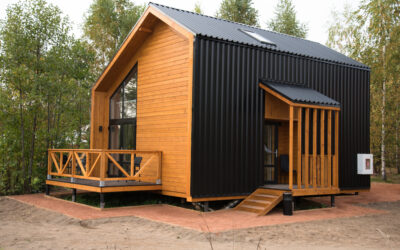What are the tax and investment considerations for a Granny Flat above versus a Tiny Home below? Income Tax Return Reporting - Income Streaming Tiny Homes Tiny home ownership does not have to follow the ownership interest of the underlying property ownership. For...
Real Estate Jargon Explained
The purchase and selling of real estate involve potentially complex legal transactions, and from time to time you may come across jargon in contracts and legal paperwork that you’re not familiar with. Here are some of the most common terms you may encounter and their meaning:

A – C
| A | |
| Agent | A person given permission to act on behalf of a client in the sale, purchase, letting or management of the real estate. Agents must be licensed by the relevant state agency. |
| Allotment | An area of land that is subdivided into smaller pieces. These smaller allocations of land are known as allotments. |
| Amenity | This is a feature of a neighbourhood. For example, public swimming, school or park can be considered as amenities. |
| Apartment | A self-contained residential unit that is usually part of a shared building or complex. |
| Appreciation | The increase in the value of a real estate caused by external economic factors and market forces. |
| Architrave | A moulding surrounding a door or window opening. |
| Auction | A public sale in which property is offered for sale through a competitive bidding process. |
| B | |
| Beam | A horizontal, load-bearing piece of timber or metal that has structural properties. |
| Bearer | A sub-floor timber or steel beam that supports floor joists. |
| Body corporate | A body of owners in a block of units. The council of the body corporate – elected by property owners in the block – meet at regular intervals to discuss various matters of administration, including repairs, maintenance and security. |
| Boundary | A-line separating adjoining properties. |
| Breach of contract | Breaking the conditions of a contract. |
| Brick veneer construction | A system in which a timber frame is tied to a single brick external wall. |
| Bridging finance | inance that is obtained for a short period of time as a “bridge” to long-term finance. This funding may be required if a home purchase completes before the owner’s sale. |
| Building regulations | Rules which are designed to maintain public safety, health and minimum acceptable standards of construction. |
| C | |
| Caveat | Warns a person buying real estate that a third party has some right or interest in the property. |
| Caveat emptor | This principle of law requires that the buyer is satisfied with the property they wish to buy before completing the transaction. The buyer purchases the property on an “as is” basis. |
| Certificate of title | A document that confirms the ownership of land. It shows who owns it and whether there are any outstanding mortgages or loans against it. |
| Chattels | Property other than real estate that is included in a sale, including items of furniture. |
| Clear title | A title that isn’t encumbered with outstanding mortgages or loans. |
| Cluster housing | Detached group of houses that have a common open space. |
| Commission | A fee or payment made to a real estate agent on completion of the sale of a property. |
| Common area | A shared area that is available for use by more than one person, which might include the stairwell of an apartment block. |
| Common law title | Sometimes referred to as an “old system title”, a common-law title consists of a series of title documents referred to as “a chain of title”. |
| Compulsory acquisition (resumption) | The power of central or state governments to purchase property without the owner agreeing to sell. A compulsory acquisition order could be used for the building of new transport links. |
| Contract of sale | A document that lists the terms and conditions of a property sale between the vendor and the purchaser. |
| Conveyance | The legal process of transferring the ownership of property from the seller’s name to the purchasers. |
| Covenant | A requirement noted on the title of a property that forces the property’s owner to adhere to named terms, conditions and restrictions regarding the property. |
| Cover note | A document issued by an insurance company to temporarily prove that a property has current insurance. |
D – Q
| D | |
| Deed | A legal document that is a record of an agreement, obligation or conveyance of property. |
| Deposit | The sum of money normally paid by the buyer at the time of exchanging contracts. It is typically between 5 and 10 per cent of the final purchase price. |
| Dual occupancy | An area of land or an existing dwelling that is zoned in such a way that allows the owner to construct a building that has two separate living arrangements. |
| Duplex | A residential property with 2 apartments – both of which have separate entrances. |
| F | |
| Fittings | Goods or articles that can be removed from a property without causing damage or an obvious reduction in its value. Some examples: • Paintings or mirrors that are not bolted but hung or screwed to a wall • Carpets • Curtains and curtain rails • Free-standing ovens, refrigerators and washing machines • Beds/sofas and other freestanding items of furniture • Lampshades • Television aerials and satellite dishes |
| Fixtures | Items such as baths, toilets and walk-in wardrobes that form part of the property and cannot be removed without causing damage. Some examples: • Light fitments • Central-heating boilers and radiators • Built-in wardrobes/cupboards (e.g. if they use a wall to form one of their sides and would thus be incomplete if they were removed) • Bathroom suites (sinks/baths/toilets) • Plugs • Kitchen units • Wall paintings |
| Freestanding | A property that stands independently of others. |
| G | |
| Gazumping | The withdrawal from a verbally agreed sale by the vendor in favour of a quicker or more profitable sale. This practice is perfectly legal before contracts are exchanged and real estate agents usually act in the vendor’s best interest and take the higher offer. Any deposits are refundable but no compensation is owed. |
| H | |
| Home unit | A residential property grouped with others, having shared common areas and owned under a group title system. An apartment within a block of apartments may be referred to as a home unit. |
| I | |
| Interest-only loans | The principal amount borrowed is not repaid until the end of the loan. Only interest is payable in the interim, but the owner will be expected to save through endowment or other property savings schemes. |
| Inventory | A list of items included with a property, including furniture and furnishings. |
| Investment | The purchase of an asset (like real estate) in order to produce a capital gain. |
| J | |
| Joint tenants | Joint tenancy is the holding of property in equal shares by two or more persons. |
| L | |
| Land tax | A State government tax payable by owners of property based on the unimproved capital value of the property. |
| Listing agreement | A contract between a property owner and a real estate agent that sets out the terms, conditions and commission associated with the sale of a specific property. |
| M | |
| Mortgage | A legal document that gives a lender an interest over a property to secure the repayment of a loan. |
| Mortgagee | An entity that lends money on the security of a mortgage. |
| Mortgagor | An entity that borrows money offering the security of a mortgage. |
| O | |
| Option to buy | A legal document giving a person a right to buy according to an option price and predetermined terms and conditions. |
| P | |
| Principal and interest loan | A loan whereby the lender repays a combination of interest and the principal borrowed throughout the term of the loan. |
| Private treaty sale | Sale of property through a real estate agent on the open market. |
| Progress payments | Funds paid by a loan provider in instalments to a builder – as the building work meets predetermined targets. |
| Property management | The management of a property on behalf of the owner. |
R – Z
| R | |
| Rates | The amount charged by the local council or water authority to provide services to a property. |
| Real property | Land with or without improvements on it. |
| Reserve price | This is the minimum price a seller has specified that they will accept to sell their property at auction. |
| S | |
| Search | The process of investigating title to land in order to ascertain if the vendor has the right to transfer ownership. |
| Semi-detached | Two houses joined together by a common wall |
| Settlement | When the sale of a property is legally finalised. |
| Stamp duty | A government tax administered by individual states. It is calculated according to the sale value on the contract of sale. Mortgages, however, it is calculated on the amount to be advanced. |
| Strata title | A system of title that allows the owner of an apartment to have a separate title for that specific unit of the building. |
| Survey | Shows the dimensions and boundaries of land and the exact location of buildings. |
| T | |
| Tenancy | The right to occupy land or buildings as provided by the terms of a lease or other agreement. |
| Tenants in common | The holding of property by two or more owners. |
| Terrace | One of a row of houses joined together with common walls. |
| Torrens title | The name of the government system of recording ownership of land. |
| Town House | Two-storey attached dwellings usually registered under a strata title. |
| Transfer | A document registered at the Land Title Office recording the change of ownership to a property. |
| U | |
| Unencumbered | Usually describes a property free of secured loans and mortgages. |
| V | |
| Valuation | A written opinion of a property’s value – usually by a real estate agent. |
| Vendor | A legal property owner who offers the property for sale. |
| Villa | Single-storey dwelling usually registered under strata or community title. |
| Z | |
| Zoning | Description of the allowable uses of land, as set out by local councils or planning authorities. |



